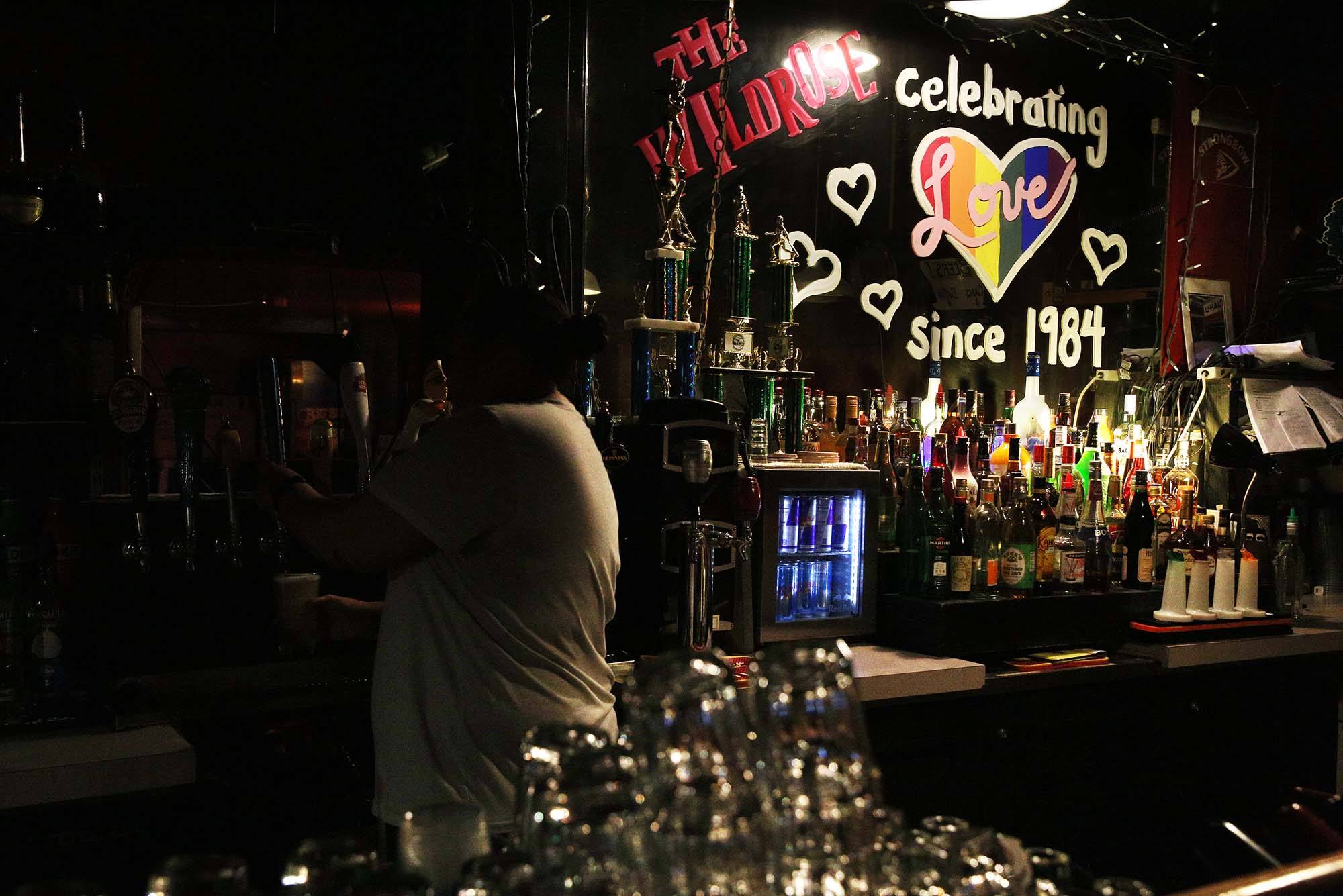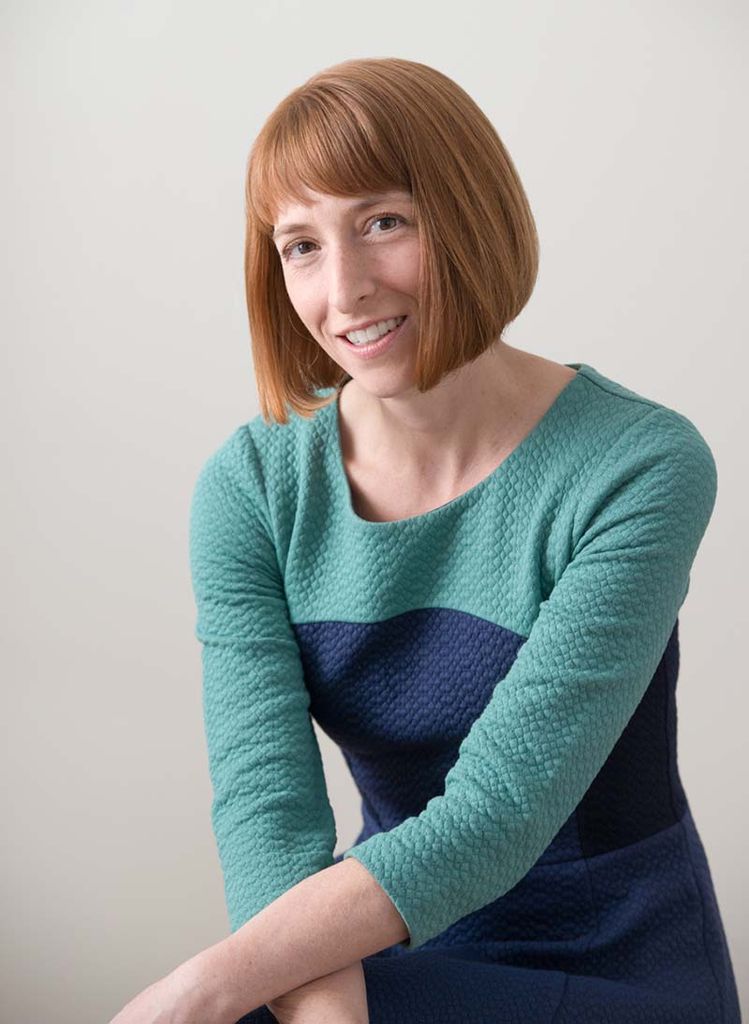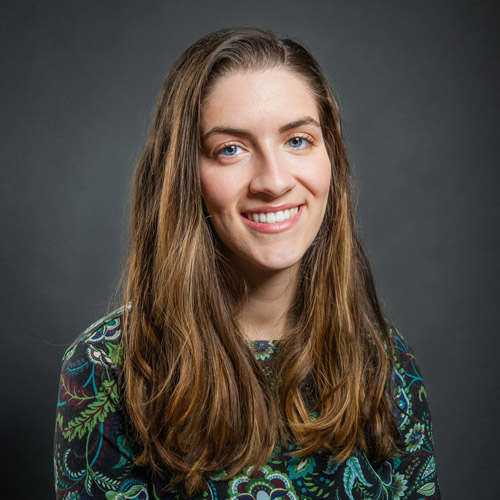Where Are All the Lesbian Bars?

Many LGBTQ+ bars have struggled to remain open due to rising costs and shifting social factors, with the few that remain often in cities where there is a need for safety and accepting spaces. The Wildrose, in Seattle, Wash., is one of the oldest lesbian bars in the country. Photo by Genna Martin/San Francisco Chronicle via Getty Images
Where Are All the Lesbian Bars?
BU sociologist researches the impact of losing queer spaces in cities grappling with gentrification and how dyke bars are celebrated long after they close
If lesbian bars were living creatures, they would be on the endangered species list.
Back in the 1980s and 1990s, there were upwards of 200 bars that catered to lesbian, bisexual, and queer women across the United States; now, there are an estimated 21 lesbian bars left—and zero in Massachusetts. Though the mass closures have left a void in many cities, lesbian bars are often celebrated and commemorated long after they shut their doors. For sociologist Japonica Brown-Saracino, an expert on urban communities and LBQ identities, that long-held affection is indicative of the value queer spaces have in communities.
“I was immediately impressed and fascinated by the commemoration efforts,” says Brown-Saracino, a Boston University College of Arts & Sciences professor and chair of sociology, who studied the impact of dyke bar commemoration efforts in four US cities—New York, Chicago, San Francisco, and New Orleans—in the five years before the pandemic. She wrote about the experience of looking at tribute events in the Journal of Lesbian Studies and American Journal of Sociology. The events were commonly billed as a way of repairing and reflecting on the history of dyke bars, and she found attendees were bonded by nostalgia and a recognition of the role gentrification played in shuttering many of these places.
“Some of the dyke bars that were commemorated were closed before event organizers were even born,” says Brown-Saracino. (“Dyke bar” and “lesbian bar” are often used interchangeably, but the word “dyke” was used by event organizers and attendees intentionally to signal that they were most interested in working-class lesbian bars, Brown-Saracino says, and that the label dyke has largely been reclaimed from once being a slur.)

One event in New York was called the NYC Dyke Bar Takeover, and consisted of a walking tour of closed dyke bars in Greenwich Village and the Lower East Side of Manhattan in late 2017 and 2018. “It was almost like a ghost tour,” Brown-Saracino says. Attendees heard oral histories and interviews with former bar regulars and owners, while the tour stopped at two iconic dyke bars that remain afloat: the Cubby Hole and Henrietta Hudson. One of the attendees Brown-Saracino met was there because she felt lonely. She wanted to feel more connected to her community and make new friends.
“Walking tours like this are just one of the ways people make up for the loss of these venues,” says Brown-Saracino. “They are where history was made and social connections were made.”
Because they are more than just a place to grab a drink, LGBTQ+ friendly places, like bars—and coffee shops or bookstores—provide people with community, safety, and the ability to be seen without feeling threatened. But some have argued that in the world of online dating, and increased societal acceptance of same-sex and queer couples, there is less need for them.
“This idea that it’s wall-to-wall acceptance is false,” Brown-Saracino says. Lesbian bars that remain open are often found in places where individuals reportedly don’t feel safe being open about their sexuality, she says. “I think that while bars are especially important in places where LBQT+ individuals feel least safe and accepted, most places can benefit from intentional community spaces.”
In San Francisco, the commemorators screened a documentary about the last lesbian bar in the Mission District, called The Lexington Club, which closed in 2015. It documented the bar’s final nights, and grappled with the more recent history of wealthy developers displacing LGBTQ+, Black, Latinx, and marginalized populations. The event in Chicago, similarly, was an archival exhibit dedicated to dyke bars in the city that have closed.
In New Orleans, a group of queer activists created a musical, Alleged Lesbian Activities, inspired by speaking with older gay and lesbian bar patrons about their experiences in dyke bars decades before. The musical was first performed in New Orleans in 2016, and later brought to Jacque’s Cabaret in 2019. By using oral history interviews in the live experience, the group sought to preserve a forgotten part of history by bringing together older and younger generations.
“Many people I spoke with were aware that any time you talk about constituting community, that consists of boundaries, and they spoke of the faults of dyke bars historically, and how they were sometimes exclusionary to trans people and Black patrons, and sometimes sites of violence and police raids,” Brown-Saracino says.
In each city, she found events had a common thread: they talked about historical problems of dyke bars and shared how struggles with increasing financial pressure and economic barriers played a role in a bar’s closing. At most of the events she documented, dyke bar commemorators were mindful of how some places and their clientele contributed to the very early stages of gentrification, even if the influx of wealth later outpaced the ability of bars and their patrons to stay in a neighborhood.
As to why there are so few bars left for queer women, Brown-Saracino says, “gentrification is a part of the story, but not the whole story.” Owners of dyke bars have reported being denied bank loans, and the gender wage gap often means cisgender women, trans women, gender nonconforming and nonbinary people, and people of color have less spending money than cisgender men.
“Gay men have always had more money to spend, and often, a more public-facing social life—the lesbian potluck tradition was real,” Brown-Saracino says. “Plus, LBQT individuals raise kids in greater numbers than gay men, which impacts their availability for nighttime bar socializing.”
This decades-long shift, made only worse by COVID-19—restaurants and bars were hit the hardest of any industry during the pandemic—leaves many questions for LGBTQ+ communities to grapple with, the biggest one being, what comes next?
“Many of the commemorators are in the tricky position of wanting to constitute community without naming the community,” Brown-Saracino says, pointing to the effort of being inclusive to all who identify as LGBTQ+, as well as those who don’t. Gay and lesbian bars that continue to thrive are ones that are open and welcoming to people of all genders and sexual orientations.
There have been recent efforts in Boston to create more dedicated space for LGBTQ+ women and nonbinary people, especially for those from BIPOC (Black, indigenous, and people of color) communities. Pop-up bars in cities have also begun to reimagine what lesbian spaces can be.
“Maybe institutions can evolve to meet the needs and wants of the people they serve,” Brown-Saracino says; for example, some might appreciate more family-oriented, queer-friendly places, or community events that let parents meet.
“When you add the pandemic to all of this, it’s bleak out there right now,” she says. “The need for community will only be greater.”

Comments & Discussion
Boston University moderates comments to facilitate an informed, substantive, civil conversation. Abusive, profane, self-promotional, misleading, incoherent or off-topic comments will be rejected. Moderators are staffed during regular business hours (EST) and can only accept comments written in English. Statistics or facts must include a citation or a link to the citation.